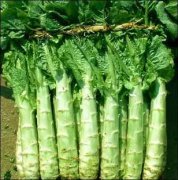What are the crop characteristics of beans? are there any pesticide residues in beans?
Do you like beans? Do you know if they have pesticide residue? Some inspections have found that the unqualified rate of pesticide residues in beans, peas, kidney beans and other bean vegetables is as high as 63%. The detected pesticide residues include tetrachlorobenzonitrile, almiperone, gaboxine, damiphene, etc. In order to make consumers fully understand the pesticide residue problem of soybean and vegetable, this paper discusses the main reasons of unqualified soybean and vegetable according to the results of agricultural inspection center of our association in 1999. So it's important to pay attention.
:: Crop characteristics of legumes
Green beans, peas, kidney beans, sweet peas, edamame beans, cowpeas and other beans and vegetables are "continuous harvest crops". The so-called continuous harvest crops are on the same plant, mature parts and flowering pollination stage coexist, simply speaking, the harvestable part and the unharvestable part exist at the same time. Therefore, to ensure that no pests occur and sustainable harvesting, pesticides are continuously sprayed. If farmers do not pay attention, it is very likely that the situation of spraying today and harvesting tomorrow will occur, resulting in a serious problem of pesticide residues in crops harvested continuously.
Agricultural Inspection Center bean and vegetable pesticide residue statistics results
In 1999, 94 samples of legumes and vegetables were examined, of which 11 samples were organic vegetables, 73 samples were commercial vegetables and 10 samples were from farmers who were counseled by the certification unit. Organic vegetable brands and guided beans and vegetables have no pesticide residues; among 73 commercially available samples, 57 samples are unqualified, as shown in Table 1. The results showed that organic brands and validation guidance of soybean and vegetable agricultural products had high food safety; compared with the commercial part, due to uncertain sources, there was a higher risk of pesticide residues.
table 1. Results of Pesticide Residues in Beans and Vegetables in 1999

Discussion on the causes of unqualified pesticide residues
There are two categories of unqualified pesticide residues, one of which is that the detected pesticide concentration exceeds the safety tolerance set by the Department of Health of the Executive Yuan; the other is that the detected pesticide is not detectable. The so-called non-detectable pesticide is legally registered and licensed, and is only approved for use in other restricted crops other than the crop. Among the 57 unqualified samples of soybean and vegetable pesticide residues in the Center, 5 samples were detected because pesticides exceeded the safety tolerance, and 4 kinds of excessive pesticides were detected, including Bifenti, Damason, Emethasone and Carbapol; 52 samples were unqualified because they could not be detected, and 24 kinds of pesticides were detected, including Tausong, Carboxin and Amethasone. See Table 2 for detailed results. These 24 pesticides cannot be detected and cannot be used on beans and vegetables.
From the above results, it can be seen that the main reason for unqualified pesticide residues in beans and vegetables is that the application of pesticides can not be detected and the main reason for high unqualified rate.
table 2. Pesticide types detected in unqualified beans and vegetables

You can eat more comfortably.
The samples tested for pesticide residues have not been cleaned, peeled, shelled and other pre-food treatments. If they are treated, most of the pesticide residues can be reduced before cooking. Therefore, it is suggested to increase the frequency of washing before eating legumes and vegetables, and to purchase products with certified brands, so that we can eat more at ease.
- Prev

Anti-cancer food: is lettuce anti-cancer? What is the practice of lettuce?
Can lettuce fight cancer? What is the relationship between lettuce and cancer? Let's have a look. Can you cook lettuce? What are the ways to eat lettuce? Let's have a look, too. The ancient golden vegetable is called Lettuce because the leaves contain milky white juice.
- Next

What's the advantage of eating olives? What is the effect of olives? what is the efficacy and function of olives?
What are the benefits of olives? can I eat them often? What are the main functions and functions of olives? let's take a look at them together. Olives are the fruits of olives of Oleaceae. It may be that people began to grow olives before historical records; it is often mentioned in the Bible
Related
- A one-day flower show brings 130 million yuan in orders! Nanhai, this Phalaenopsis exhibition is amazing
- What do the flower language and meaning of Lutheran tree mean? Precautions for planting Lutheran tree
- Encounter Chaoshan Kongfu tea, not without this cup of Phoenix single clump
- The durian market in Vietnam and Thailand is flooded. The price of imported durian has plummeted by 30-40% in a month.
- Shanghai solved the problem of local vegetable supply by planting 80,000 mu of green leafy vegetables.
- Wageningen University has become the best agricultural university in the world for the seventh time in a row.
- The strongest export season of South African grapes is full of challenges, with exports to Russia falling sharply by 21%.
- Sri Lanka is on the verge of bankruptcy, "Tea for debt" Organic Agriculture Revolution aggravates the Food crisis?
- Turning waste into earthworm manure and worm manure into organic fertilizer-A new choice for auxiliary farming
- Organic rice growers shoulder the responsibility of nurturing agricultural talents! Yinchuan Sustainable Farm with Organic Life Camp

